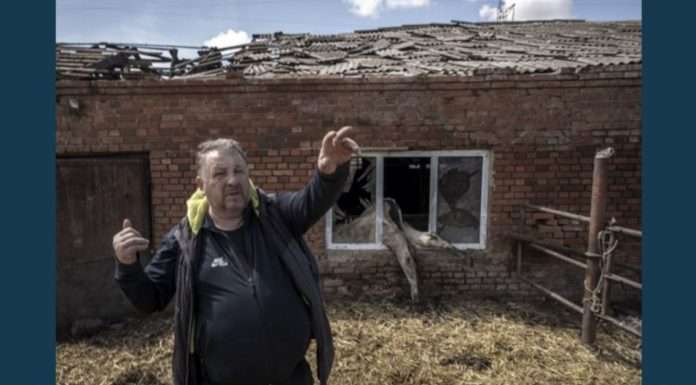
May 15 (UPI) — Oleh Synehubov, head of the regional military administration in Kharkiv, said Sunday that about 2,000 residents have started to return to Ukraine‘s second-largest city.
“Our armed forces are pushing back the enemy and the inhabitants are beginning to return to their homes. It’s still too dangerous!” Synehubov said in a post to Facebook.
Synehubov said Russian forces did not try to attack the city in the night but has focused on shelling other communities in the region which “indicates that it is too early to relax.”
“I urge everyone to respond adequately to alarms and not to be on the streets unnecessarily,” he said.
Synehubov claimed that retreating Russian troops had mined “everything” including baby cribs and that Ukrainian forces were carefully working to de-mine the region.
“We continue to work on rebuilding critical infrastructure and delivering humanitarian aid, especially to residents of newly liberated settlements,” he said.
The Kharkiv Regional State Administration said in another post on Facebook that the military had shot down a Russian plane in the northern part of the region and that there was still a risk from rocket and artillery shelling.
It was not immediately clear if the residents returning to Kharkiv were refugees who had sought safety outside of Ukraine or were displaced internally.
More than 6.1 million of the 44.13 million Ukrainians have fled for neighboring countries since the start of the invasion, according to data from the U.N. High Commissioner for Refugees.
The vast majority, 3.3 million, have fled to Poland though many of them may have since moved on to other countries within Europe. Poland is a member of Europe’s Schengen Area which allows for easy travel between countries.
More than 594,000 have departed for Hungary and more than 415,000 have fled for Slovakia, both of which are also in the Schengen Area. Another 901,000 have fled for Romania and more than 461,000 have fled for Moldova.
The data shows that at least 1,698,500 people have crossed the border into Ukraine since Feb. 28, though the UNHCR noted that figure “does not necessarily indicate sustainable returns as the situation across Ukraine remains highly volatile and unpredictable.”
“Due to the constantly changing situation, it is too premature to draw conclusions on definitive trends,” the UNHCR said.
“Therefore this figure has not been deducted from the overall refugee numbers until more data on cross-border movements will be available.”
More than 3,573 civilians have been killed, including 241 children, and 3,816 civilians have been injured in Ukraine since the start of the invasion on Feb. 24, according to a statement Friday from the United Nations’ Office of the High Commissioner for Human Rights.
“Most of the civilian casualties recorded were caused by the use of explosive weapons with a wide impact area, including shelling from heavy artillery and multiple launch rocket systems, and missile and airstrikes,” the statement reads.
“OHCHR believes that the actual figures are considerably higher, as the receipt of information from some locations where intense hostilities have been going on has been delayed and many reports are still pending corroboration.”






